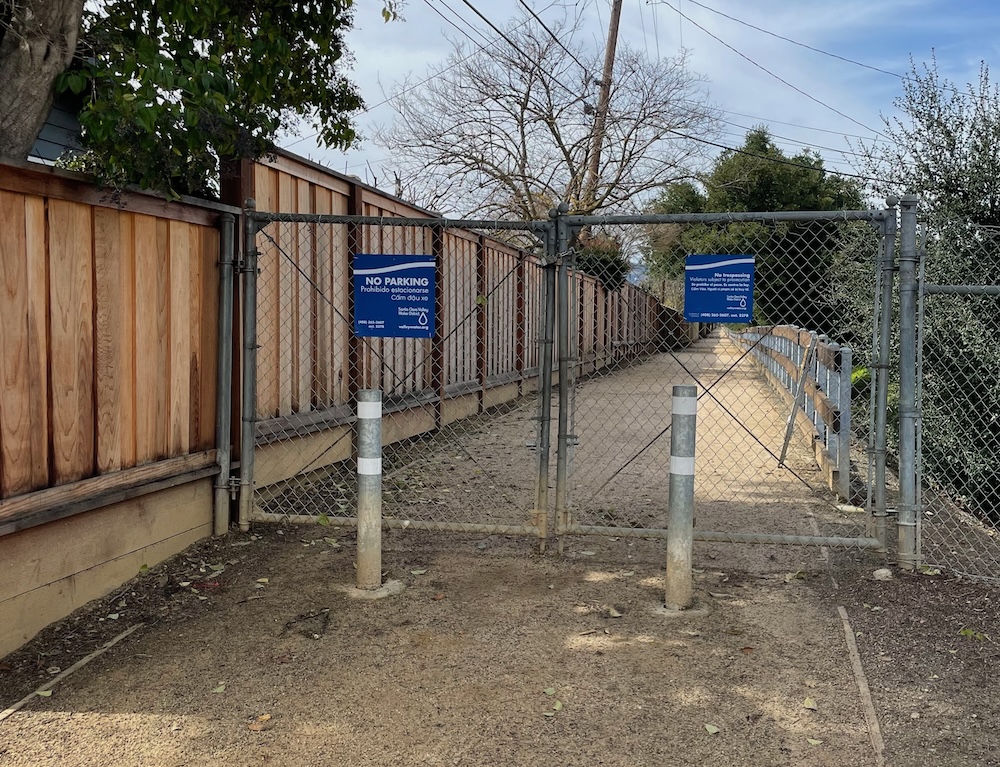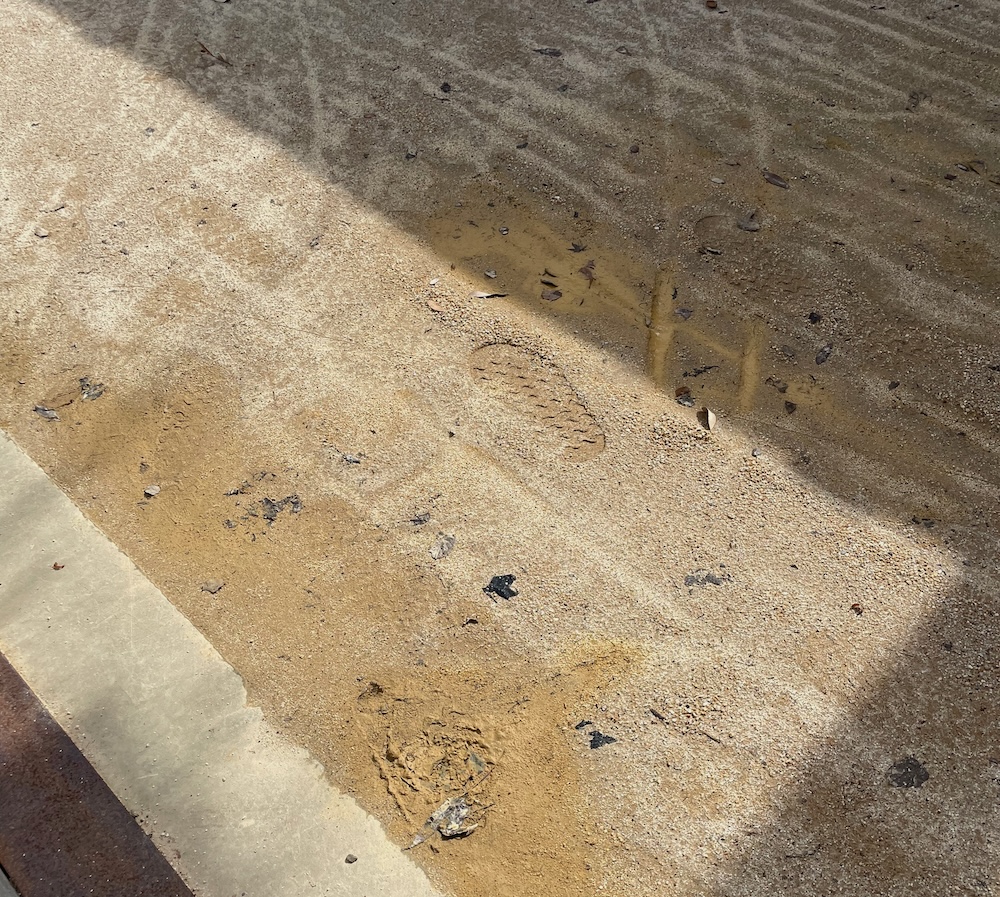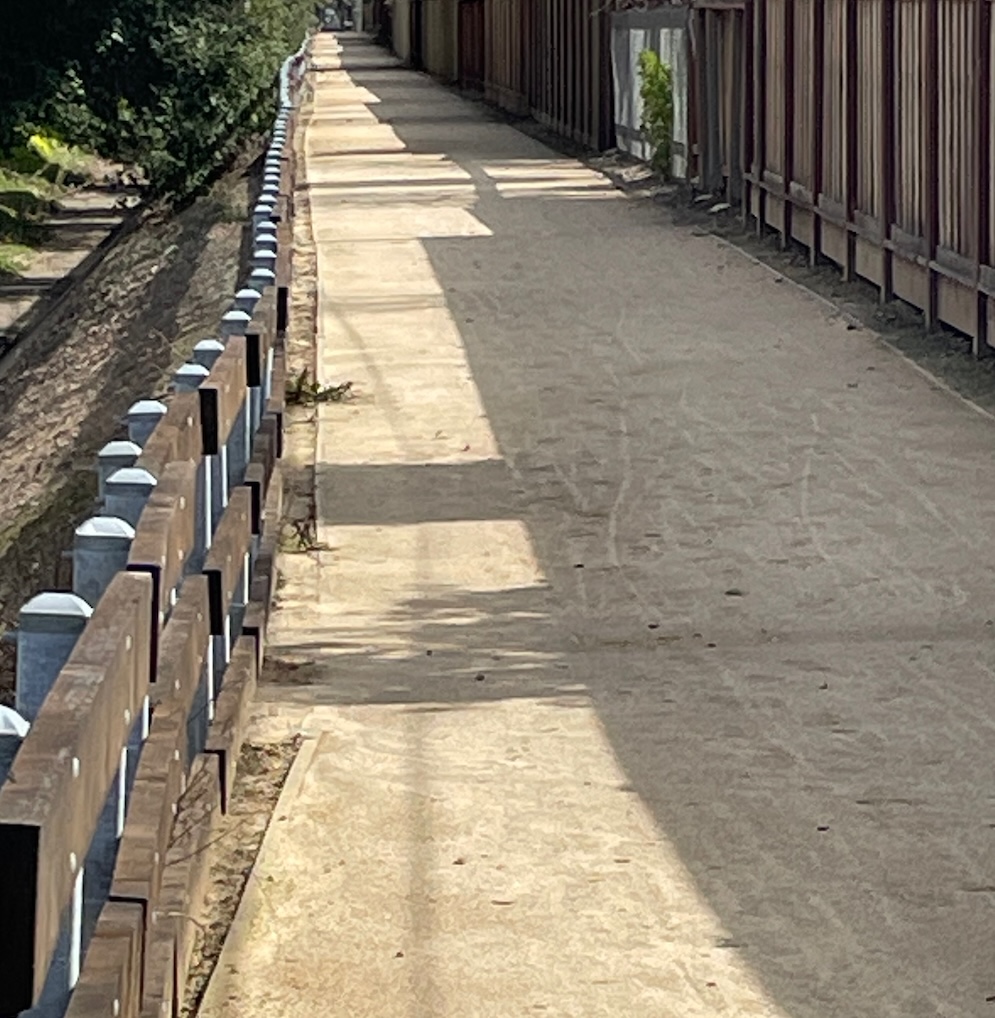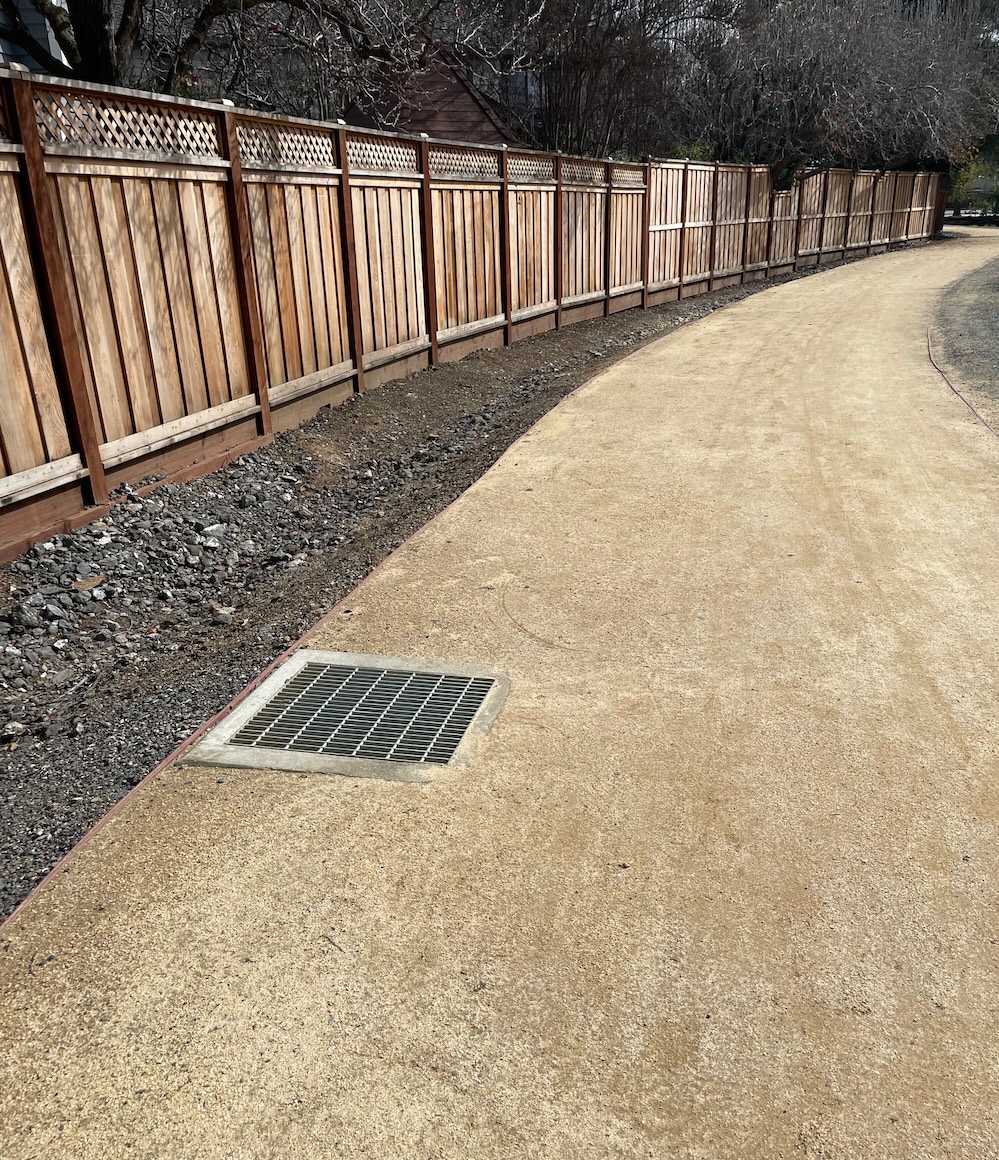Residents and city staff have seen how the Regnart Creek Trail is in high use by many people for exercise, recreation, school commuting, and transportation to the city center to visit the library or attend events. As we predicted, it’s a wonderful amenity for our community and enjoyed by many whether walking or biking.
The Regnart Trail keeps closing
This high usage and the rains of the past two months have unfortunately highlighted a troubling issue with the decomposed granite trail surface, mainly in the portion between E. Estates and Blaney Avenue. The trail now has sections of deep ruts that can be tripped over, areas that don’t dry and are “mushy” even after three days without rain, and a general slipperiness that can make it less comfortable for some residents to walk and for many bikes to use the trail. This has led to intermittent closures, including a three week complete trail closure over the holiday break and the current closure of the Blaney/E. Estates trail portion. Most of the closures are clearly due to the heavy rains saturating the trail, but it would be helpful to know how long the trail will be closed.

The trail gates have been closed quite often this winter, especially between Blaney and E. Estates.

Ruts and footprints in the trail near the Wilson Park bridge.
Trail in progress for six years and just opened last March
It’s surprising that a trail that only opened last March (2023) is having these issues already. There were six years of planning with extensive public outreach and multiple votes by City Council before it opened. The final design was completed by the end of 2020 and consisted of an unpaved biking/walking trail and personal fencing or walls on adjacent and nearby property owner’s land. (Read here on the outcome of that Council vote. Read here the complete history and cost of the Regnart Trail.) After that vote, the city staff immediately sent out for bid both the trail and personal fencing. It then took more than two years to construct the trail and fencing before it opened to the public.
Dips and hills appear to contribute to the issue
Upon recent inspection of the trail, one issue seems to stand out in particular with the Blaney/E. Estates segment. The surface rises and falls in elevation in short spans which encourages water to pool. The lower areas stay wet, mushy and take on ruts, drying very slowly over many days. The segment west of Blaney is very flat and does not have these high and low spots, and the rutting/mushy issues are less prevalent there. It’s also worth noting that the high/low spots cannot have been caused by truck traffic, as Valley Water already used the trail (then just a dirt road) as maintenance access for their trucks.

It is easy to see the high and low spots when looking down the trail.
Decomposed Granite is known for rain issues
It’s possible that the root cause of these issues is the material chosen, though the area west of Blaney which has the same material is not seeing these issues. Decomposed granite (DG) is known for having issues maintaining its integrity in the rain, especially if it doesn’t have an adequate base layer. (See here for more info on installing it carefully, and base layers.) The trail was installed with 4” thick base layer of Class 2 Aggregate base, which should be adequate. Staff confirmed that the design of the trail was performed by a licensed engineer and with the approval of the Water District“When wet, as in immediately after a rain event, even stabilized decomposed granite acts somewhat like wet, muddy soil.”
The type of binder used can also make a difference in stability. The binder for the DG can be mixed in or a resin coating on the DG itself. The Regnart Trail was installed with the mix-in binder. The other type has better rain and wear resistance, but has a downside in that it is slightly less water permeable.
According to City Transportation Manager David Stillman, the Service Center in the Cupertino Public Works Department is looking at the issue and the supplier is being contacted for guidance. An update is expected by April.

The trail west of Blaney does not have the same rutting/mushy issues as the eastern part.
Solutions
The City Staff are currently investigating how to resolve this issue. One idea is to spray on additional binder or a heavier application of binder onto the surface to hold the DG more firmly in place during the rain. It is likely that some minor surfacing work will also need to be done to flatten the ruts that are already there. This would be a quick process taking about a week, as curing of the binder only takes hours.
The road surface as noted above is not flat, so it may require more roadwork for any new binder application to work properly. This would likely require some major grading, laying a new base, and a reapplication of the DG surface in the areas with the greatest issues.
Ultimately, DG may not be the best material for everywhere on the trail. There are other options available, including laying plastic grids below the DG, continuously laid pourous material, or even pavers laid in specific areas. All of these would be more costly than just adding additional binder to the DG.
We’ll update you as we get more information about the city’s plans to fix these issues on this great trail. It’s clear that this could be an ongoing issue which will need full resolution now that the rains have returned after many years of drought. Until then, wait for the gates to be open, and the rainy season to end!
The information in this article is solely the opinion of the author and Walk-Bike Cupertino and does not reflect the opinions of any other organization or entity. For more information, contact WBC at info@walkbikecupertino.org.

I wonder if others have noticed that even through the summer, there were short soggy sections due to overwatering of the yard on the other side of the fence.